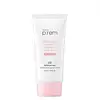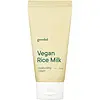What's inside
What's inside
 Key Ingredients
Key Ingredients

 Benefits
Benefits

 Concerns
Concerns

No concerns
 Ingredients Side-by-side
Ingredients Side-by-side

Water
Skin ConditioningZinc Oxide
Cosmetic ColorantCyclohexasiloxane
EmollientCaprylyl Methicone
Skin ConditioningButyloctyl Salicylate
Skin ConditioningPropanediol
SolventPropylheptyl Caprylate
EmollientPolyglyceryl-3 Polydimethylsiloxyethyl Dimethicone
Skin ConditioningDicaprylyl Carbonate
EmollientNiacinamide
SmoothingMethyl Trimethicone
Skin ConditioningCalamine
AbsorbentMethyl Methacrylate Crosspolymer
Pyrus Communis Fruit Extract
Skin ConditioningPrunus Persica Fruit Extract
AbrasiveAvena Sativa Kernel Extract
AbrasiveCynara Scolymus Leaf Extract
Skin ConditioningCucumis Melo Fruit Extract
Skin ConditioningHedera Helix Leaf/Stem Extract
AntimicrobialFicus Carica Fruit Extract
HumectantCentella Asiatica Extract
CleansingMoringa Oleifera Seed Extract
Skin ConditioningCardiospermum Halicacabum Flower/Leaf/Vine Extract
Skin ConditioningRosmarinus Officinalis Leaf Extract
AntimicrobialRosa Damascena Flower Water
MaskingSodium Hyaluronate
HumectantJasminum Officinale Flower Water
MaskingCamellia Sinensis Leaf Water
MaskingHydrogenated Lecithin
EmulsifyingRibes Nigrum Seed Oil
EmollientHelianthus Annuus Seed Oil
EmollientDisteardimonium Hectorite
StabilisingMagnesium Sulfate
Triethoxycaprylylsilane
Panthenol
Skin ConditioningLauryl Polyglyceryl-3 Polydimethylsiloxyethyl Dimethicone
Skin ConditioningPolyglyceryl-2 Dipolyhydroxystearate
Skin ConditioningPolymethylsilsesquioxane
Methylpropanediol
SolventGlycerin
HumectantGlyceryl Caprylate
EmollientCaprylyl Glycol
EmollientEthylhexylglycerin
Skin ConditioningAdenosine
Skin ConditioningPolyquaternium-51
Skin ConditioningBeta-Glucan
Skin ConditioningCyanocobalamin
Skin ConditioningTocopherol
AntioxidantButylene Glycol
HumectantHydrolyzed Hyaluronic Acid
HumectantOctyldodecanol
EmollientMaltodextrin
AbsorbentCeramide NP
Skin ConditioningCitric Acid
BufferingHelianthus Annuus Seed Oil Unsaponifiables
EmollientWater, Zinc Oxide, Cyclohexasiloxane, Caprylyl Methicone, Butyloctyl Salicylate, Propanediol, Propylheptyl Caprylate, Polyglyceryl-3 Polydimethylsiloxyethyl Dimethicone, Dicaprylyl Carbonate, Niacinamide, Methyl Trimethicone, Calamine, Methyl Methacrylate Crosspolymer, Pyrus Communis Fruit Extract, Prunus Persica Fruit Extract, Avena Sativa Kernel Extract, Cynara Scolymus Leaf Extract, Cucumis Melo Fruit Extract, Hedera Helix Leaf/Stem Extract, Ficus Carica Fruit Extract, Centella Asiatica Extract, Moringa Oleifera Seed Extract, Cardiospermum Halicacabum Flower/Leaf/Vine Extract, Rosmarinus Officinalis Leaf Extract, Rosa Damascena Flower Water, Sodium Hyaluronate, Jasminum Officinale Flower Water, Camellia Sinensis Leaf Water, Hydrogenated Lecithin, Ribes Nigrum Seed Oil, Helianthus Annuus Seed Oil, Disteardimonium Hectorite, Magnesium Sulfate, Triethoxycaprylylsilane, Panthenol, Lauryl Polyglyceryl-3 Polydimethylsiloxyethyl Dimethicone, Polyglyceryl-2 Dipolyhydroxystearate, Polymethylsilsesquioxane, Methylpropanediol, Glycerin, Glyceryl Caprylate, Caprylyl Glycol, Ethylhexylglycerin, Adenosine, Polyquaternium-51, Beta-Glucan, Cyanocobalamin, Tocopherol, Butylene Glycol, Hydrolyzed Hyaluronic Acid, Octyldodecanol, Maltodextrin, Ceramide NP, Citric Acid, Helianthus Annuus Seed Oil Unsaponifiables
Water
Skin ConditioningCaprylic/Capric Triglyceride
MaskingGlycerin
HumectantPropanediol
SolventButylene Glycol
HumectantCetearyl Alcohol
EmollientPolyglyceryl-3 Methylglucose Distearate
EmulsifyingPolyglyceryl-3 Distearate
Emulsifying1,2-Hexanediol
Skin ConditioningDiglycerin
HumectantVinyldimethicone
Cetyl Alcohol
EmollientTrehalose
HumectantCetyl Palmitate
EmollientSorbitan Olivate
EmulsifyingSorbitan Palmitate
EmulsifyingGlyceryl Stearate
EmollientHydrogenated Rice Bran Oil
Skin ConditioningPentaerythrityl Distearate
EmulsifyingHydroxyethyl Acrylate/Sodium Acryloyldimethyl Taurate Copolymer
Emulsion StabilisingCarbomer
Emulsion StabilisingCaprylyl Glycol
EmollientTromethamine
BufferingGlyceryl Stearate Citrate
EmollientHydrogenated Lecithin
EmulsifyingEthylhexylglycerin
Skin ConditioningSodium Phytate
Polyglyceryl-10 Stearate
Skin ConditioningDisodium EDTA
Soymilk
Skin ConditioningOryza Sativa Extract
AbsorbentTocopherol
AntioxidantCeramide NP
Skin ConditioningSodium Stearoyl Glutamate
CleansingWater, Caprylic/Capric Triglyceride, Glycerin, Propanediol, Butylene Glycol, Cetearyl Alcohol, Polyglyceryl-3 Methylglucose Distearate, Polyglyceryl-3 Distearate, 1,2-Hexanediol, Diglycerin, Vinyldimethicone, Cetyl Alcohol, Trehalose, Cetyl Palmitate, Sorbitan Olivate, Sorbitan Palmitate, Glyceryl Stearate, Hydrogenated Rice Bran Oil, Pentaerythrityl Distearate, Hydroxyethyl Acrylate/Sodium Acryloyldimethyl Taurate Copolymer, Carbomer, Caprylyl Glycol, Tromethamine, Glyceryl Stearate Citrate, Hydrogenated Lecithin, Ethylhexylglycerin, Sodium Phytate, Polyglyceryl-10 Stearate, Disodium EDTA, Soymilk, Oryza Sativa Extract, Tocopherol, Ceramide NP, Sodium Stearoyl Glutamate
 Reviews
Reviews

Ingredients Explained
These ingredients are found in both products.
Ingredients higher up in an ingredient list are typically present in a larger amount.
Butylene Glycol (or BG) is used within cosmetic products for a few different reasons:
Overall, Butylene Glycol is a safe and well-rounded ingredient that works well with other ingredients.
Though this ingredient works well with most skin types, some people with sensitive skin may experience a reaction such as allergic rashes, closed comedones, or itchiness.
Learn more about Butylene GlycolCaprylyl Glycol is a humectant and emollient, meaning it attracts and preserves moisture.
It is a common ingredient in many products, especially those designed to hydrate skin. The primary benefits are retaining moisture, skin softening, and promoting a healthy skin barrier.
Though Caprylyl Glycol is an alcohol derived from fatty acids, it is not the kind that can dry out skin.
This ingredient is also used as a preservative to extend the life of products. It has slight antimicrobial properties.
Learn more about Caprylyl GlycolCeramide NP is a type of ceramide and formally known as ceramide 3.
Ceramides are intercellular lipids naturally found in our skin that bonds dead skin cells together to create a barrier. They are known for their ability to hold water and thus are a great ingredient for dry skin.
Ceramides are an important building block for our skin barrier. A stronger barrier helps the skin look more firm and hydrated. By bolstering the skin ceramides act as a barrier against irritating ingredients. This can help with inflammation as well.
If you would like to eat ceramides, sweet potatoes contain a small amount.
Read more about other common types of ceramides here:
Ceramide AP
Ceramide EOP
Ethylhexylglycerin (we can't pronounce this either) is commonly used as a preservative and skin softener. It is derived from glyceryl.
You might see Ethylhexylglycerin often paired with other preservatives such as phenoxyethanol. Ethylhexylglycerin has been found to increase the effectiveness of these other preservatives.
Glycerin is already naturally found in your skin. It helps moisturize and protect your skin.
A study from 2016 found glycerin to be more effective as a humectant than AHAs and hyaluronic acid.
As a humectant, it helps the skin stay hydrated by pulling moisture to your skin. The low molecular weight of glycerin allows it to pull moisture into the deeper layers of your skin.
Hydrated skin improves your skin barrier; Your skin barrier helps protect against irritants and bacteria.
Glycerin has also been found to have antimicrobial and antiviral properties. Due to these properties, glycerin is often used in wound and burn treatments.
In cosmetics, glycerin is usually derived from plants such as soybean or palm. However, it can also be sourced from animals, such as tallow or animal fat.
This ingredient is organic, colorless, odorless, and non-toxic.
Glycerin is the name for this ingredient in American English. British English uses Glycerol/Glycerine.
Learn more about GlycerinHydrogenated Lecithin is created from the hydrogenation of lecithin (a group of phospholipids). Hydrogenation is a chemical reaction between hydrogen and another element.
This ingredient is an emollient and emulsifier. As an emollient, it helps soften skin by trapping moisture within. As an emulsifier, it prevents oil and water ingredients from separating.
Propanediol is an all-star ingredient. It softens, hydrates, and smooths the skin.
It’s often used to:
Propanediol is not likely to cause sensitivity and considered safe to use. It is derived from corn or petroleum with a clear color and no scent.
Learn more about PropanediolTocopherol (also known as Vitamin E) is a common antioxidant used to help protect the skin from free-radicals and strengthen the skin barrier. It's also fat soluble - this means our skin is great at absorbing it.
Vitamin E also helps keep your natural skin lipids healthy. Your lipid skin barrier naturally consists of lipids, ceramides, and fatty acids. Vitamin E offers extra protection for your skin’s lipid barrier, keeping your skin healthy and nourished.
Another benefit is a bit of UV protection. Vitamin E helps reduce the damage caused by UVB rays. (It should not replace your sunscreen). Combining it with Vitamin C can decrease sunburned cells and hyperpigmentation after UV exposure.
You might have noticed Vitamin E + C often paired together. This is because it is great at stabilizing Vitamin C. Using the two together helps increase the effectiveness of both ingredients.
There are often claims that Vitamin E can reduce/prevent scarring, but these claims haven't been confirmed by scientific research.
Learn more about TocopherolWater. It's the most common cosmetic ingredient of all. You'll usually see it at the top of ingredient lists, meaning that it makes up the largest part of the product.
So why is it so popular? Water most often acts as a solvent - this means that it helps dissolve other ingredients into the formulation.
You'll also recognize water as that liquid we all need to stay alive. If you see this, drink a glass of water. Stay hydrated!
Learn more about Water